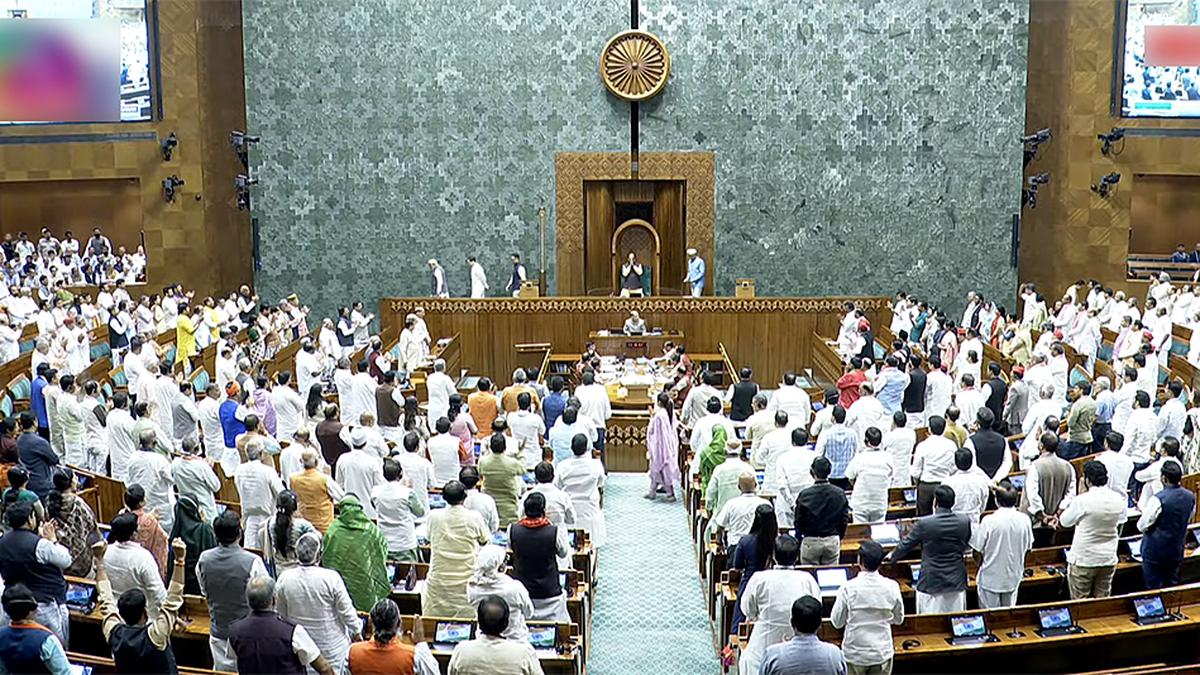In a surprising development during today’s Lok Sabha session, the Speaker introduced a resolution to reassess the Emergency period of the mid-1970s in India.
Resolution Introduction
The resolution aims to conduct a thorough review of the Emergency measures imposed by then Prime Minister Indira Gandhi, which suspended civil liberties and caused significant political unrest.
Opposition’s Reaction
The introduction of the resolution sparked immediate backlash from opposition parties. They criticized the move, expressing concerns about potential biases and the politicization of historical events.
Parliamentary Chaos
The parliamentary session quickly descended into chaos as opposition members vehemently objected to the resolution. They accused the ruling party of attempting to rewrite history to suit its own agenda.
Protests and Demands
Amid heated exchanges, opposition MPs demanded the withdrawal of the resolution, labeling it a partisan maneuver aimed at shaping historical narratives.
Escalating Tensions
Tensions escalated as lawmakers engaged in passionate debates, highlighting deep-seated divisions over the interpretation of India’s turbulent political history.
Conclusion
While intended to initiate a scholarly review, the Speaker’s resolution has underscored profound political divisions. It raises questions about how India’s past will influence its current political landscape and governance.
Multiple Choice Questions (MCQs) with Answers:
- What was the purpose of the resolution introduced by the Lok Sabha Speaker?
- A) To commemorate the Emergency period.
- B) To reevaluate the Emergency measures of the mid-1970s.
- C) To celebrate historical achievements.
- D) To implement new legislative reforms.
- Answer: B) To reevaluate the Emergency measures of the mid-1970s.
- How did opposition parties react to the Speaker’s resolution?
- A) They supported it unanimously.
- B) They criticized it for potential biases.
- C) They proposed amendments to the resolution.
- D) They ignored the resolution completely.
- Answer: B) They criticized it for potential biases.
- What sparked protests within the parliamentary chambers?
- A) Introduction of a controversial bill.
- B) Passage of a unanimous resolution.
- C) Exchange of heated arguments.
- D) Introduction of the resolution on Emergency.
- Answer: D) Introduction of the resolution on Emergency.
- What did opposition MPs demand regarding the resolution?
- A) Immediate passage into law.
- B) Withdrawal of the resolution.
- C) Expansion of its scope.
- D) Consultation with historians.
- Answer: B) Withdrawal of the resolution.
- What did the resolution highlight about India’s political landscape?
- A) Unity among political parties.
- B) Historical clarity and accountability.
- C) Deep political divisions and ideological battles.
- D) Economic achievements post-Independence.
- Answer: C) Deep political divisions and ideological battles.
